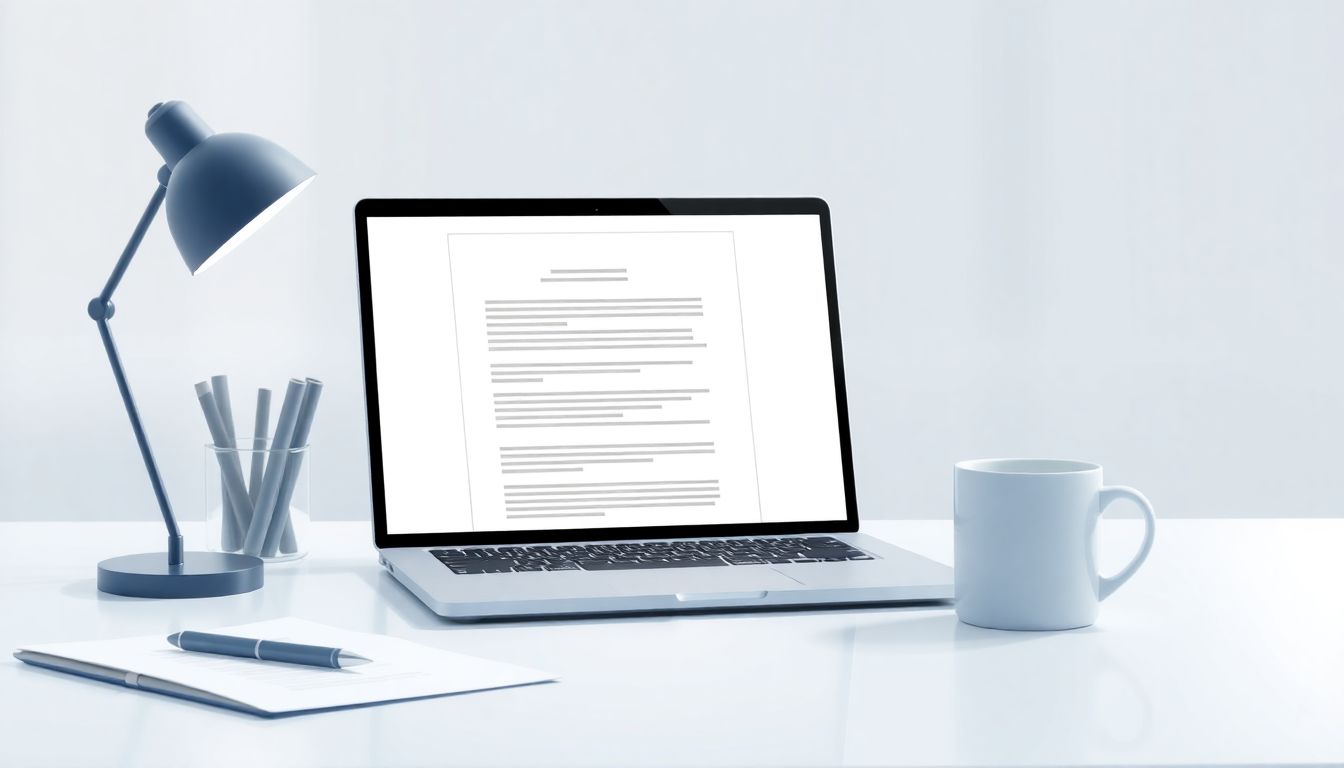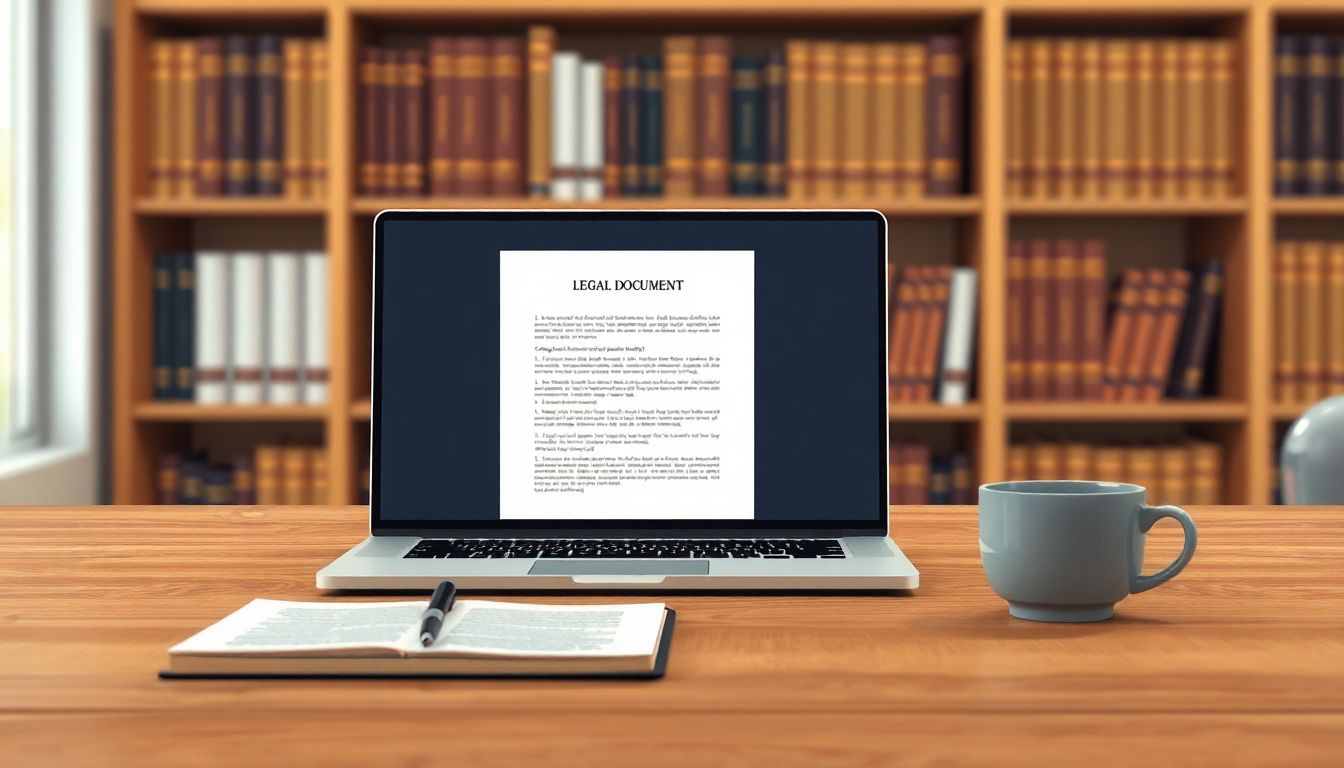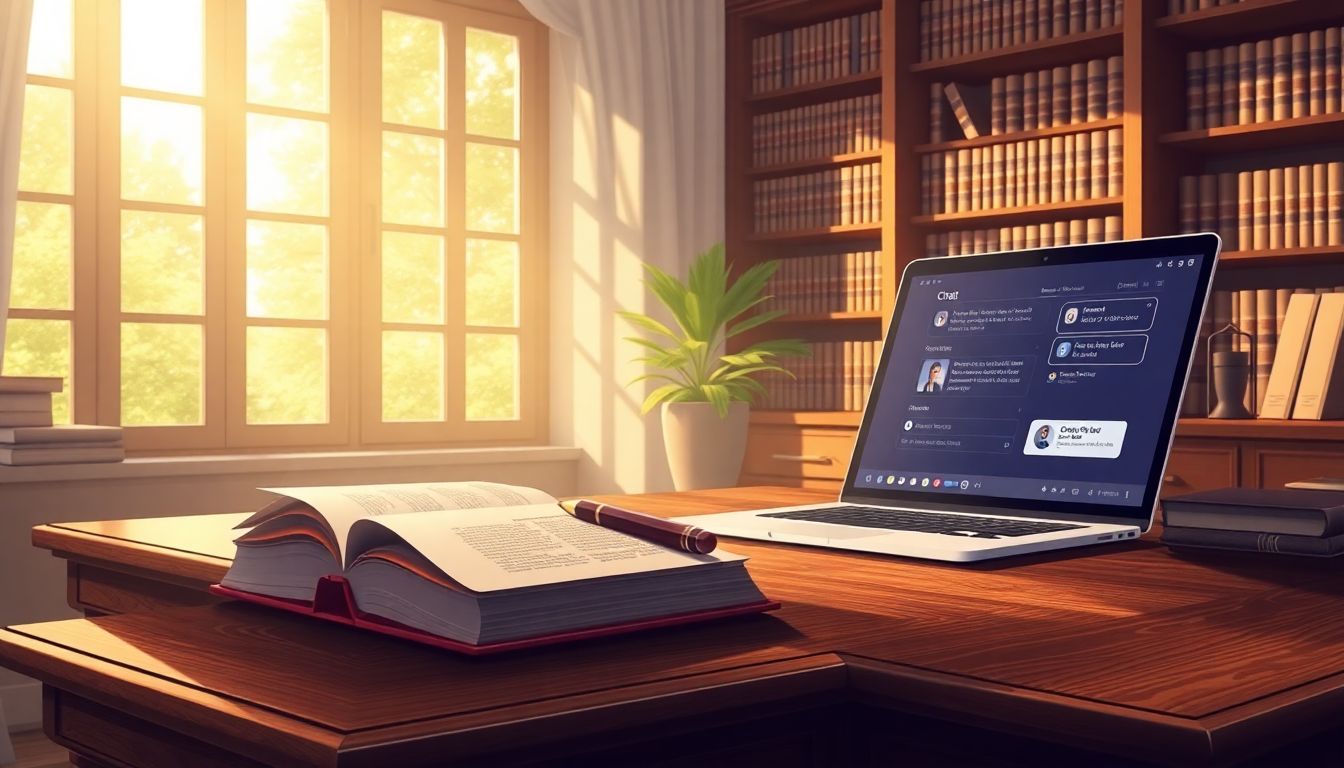Legal document drafting can often feel like navigating a labyrinth—frustrating and time-consuming. Many of us know the struggle of wrestling with complicated language and formatting, leaving us feeling overwhelmed and exhausted. It’s a common pain point, and you’re not alone in wishing for a simpler solution.
What if I told you there’s a way to make this whole process easier? By embracing ChatGPT, you can streamline your drafting experience and create professional documents quickly and efficiently. Stick around, and I’ll share how this tool can revolutionize your approach to legal writing.
In the upcoming sections, we’ll explore the benefits of using ChatGPT, common documents you can draft, and even some handy tips to enhance your drafts. With the right strategies, you’ll be on your way to mastering legal drafting like a pro!
Key Takeaways
- ChatGPT simplifies legal document drafting, saving time and reducing stress.
- The AI improves accuracy and clarity in documents while allowing lawyers to focus on complex tasks.
- Common documents you can draft include contracts, agreements, wills, and NDAs.
- Using specific prompts helps generate precise drafts tailored to your needs.
- Regularly review AI outputs for compliance and legal terminology accuracy.
- Be aware of the limitations of AI, including contextual understanding and data privacy concerns.
- Best practices include clear prompts, thorough reviews, consulting legal resources, and seeking feedback.

How ChatGPT Can Simplify Legal Document Drafting
ChatGPT can significantly simplify the process of legal document drafting.
By leveraging AI technology, it streamlines legal workflows and aids in the creation of documents that are often time-consuming and complex.
Instead of spending hours drafting and revising documents, legal professionals can utilize ChatGPT to create drafts efficiently.
This AI-assisted document preparation helps simplify complex legal language, enabling clearer communication.
Furthermore, it allows lawyers to focus on higher-level tasks while the AI handles routine document creation.
For those unfamiliar with the process, you can give this prompt a try: “Draft a simple contract for a real estate transaction including parties involved, terms of agreement, and payment details.”
Benefits of Using ChatGPT for Legal Document Creation
The benefits of using ChatGPT for legal document creation are numerous.
First and foremost, it saves time, allowing lawyers to generate drafts quickly.
Less time spent drafting means faster turnaround times for clients, enhancing productivity and client satisfaction.
Additionally, ChatGPT improves the accuracy of documents by reducing drafting errors.
The application’s user-friendly interface helps users navigate through the drafting process with ease.
By streamlining legal procedures, it enables legal professionals to allocate their resources more effectively.
You can try this prompt to see how it works: “List the advantages of using AI in legal drafting.”
Common Legal Documents You Can Draft with ChatGPT
ChatGPT can assist in drafting a variety of common legal documents.
Some of the most popular types include contracts, agreements, wills, and non-disclosure agreements (NDAs).
For instance, you can create customizable contracts through AI that cater to specific needs.
Using ChatGPT, drafting agreements becomes not only faster but also more consistent.
Furthermore, legal briefs can be generated with clarity and precision.
If you’re interested in a specific type of document, you can use this prompt: “Generate an NDA template that includes confidentiality terms and duration.”
Step-by-Step Guide to Using ChatGPT for Drafting Legal Documents
Using ChatGPT for drafting legal documents is straightforward, following a systematic approach.
First, identify the type of document you need. Be specific about your requirements.
Next, formulate a clear prompt to guide the AI. For example, instead of saying, “create a contract,” you might say, “draft a lease agreement for a residential property, specifying the rental amount and duration.”
After that, review the generated document carefully for accuracy and compliance with legal standards.
If revisions are necessary, you can ask ChatGPT to modify specific sections.
Don’t hesitate to use prompts such as: “Provide a step-by-step breakdown of the elements needed in a will.”
This ensures that you get comprehensive drafts tailored to your requirements.

Tips for Improving Your Legal Drafts with ChatGPT
Improving your legal drafts with ChatGPT can significantly enhance clarity and effectiveness.
Start by using specific prompts that guide the model to generate content aligned with your legal requirements.
For example, instead of a vague request like “write a contract,” try, “Draft a service agreement between a graphic designer and a tech company, including project deliverables and payment terms.”
Break down complex information into simpler components.
If you’re drafting a will, you could use a prompt like, “Outline the essential elements needed in a will for a married couple with two children.”
Next, make use of ChatGPT’s ability to provide variations on a draft.
After your initial draft, ask the AI to rephrase certain sections to enhance clarity. A good prompt for this is, “Rewrite the payment terms section to be more concise.”
It’s also helpful to review the AI-generated content for legal terminology. Ensure it aligns with current laws and practices.
A great prompt to confirm compliance would be, “Check if the following terms meet the legal standards for contracts in [your jurisdiction].”
Lastly, continuous practice will help you learn how to communicate more effectively with ChatGPT.
Real-World Examples of ChatGPT in Legal Document Drafting
ChatGPT is not just a theoretical tool; it has practical applications in the legal field.
Many legal firms are using it to streamline their workflows, generating everything from contracts to legal letters.
For instance, a small law firm could use ChatGPT to draft a non-disclosure agreement for a startup.
They might prompt, “Create an NDA template suitable for a tech startup looking to protect their intellectual property.”
Another example can be seen in litigation support, where legal teams utilize AI to draft pleadings.
A law firm specializing in family law might input, “Generate a petition for divorce including child custody considerations.”
Furthermore, ChatGPT has been adopted in various jurisdictions to assist in creating court documents like motions and briefs.
This not only speeds up the preparation process but also reduces the chances of clerical errors.
Firms report improved accuracy and faster turnaround times, enabling them to serve clients more timely.
Potential Limitations and Considerations When Using ChatGPT
While ChatGPT is a powerful tool, it does come with its limitations.
One key issue is that the AI lacks the contextual understanding of nuanced legal scenarios.
This means it might generate content that appears correct on the surface but fails to account for specific legal implications.
Ethical considerations also arise, as relying solely on AI for legal matters may lead to negligence if the AI outputs incorrect information.
Therefore, it’s vital to always review and revise AI-generated drafts.
Additionally, data privacy is a concern when it comes to sharing sensitive legal information with an AI model.
Be mindful of the data you input, especially if it involves client confidentiality.
Lastly, inconsistent updates to the AI model could lead to outdated legal references.
Your prompt might be, “Summarize the latest legal changes in [specific area of law] for accurate incorporation into my draft.”
Always consider these factors when integrating ChatGPT into your legal practice.
Best Practices for Ensuring Accuracy in Legal Drafts with ChatGPT
Ensuring accuracy in legal drafts created with ChatGPT requires a systematic approach.
First, always start with a clear and detailed prompt. This sets the stage for accurate outputs.
For instance, you could say, “Draft an employment contract outlining job responsibilities, compensation, and termination clauses.”
Secondly, reviewing the draft thoroughly is crucial. Check for continuity, legal terms, and whether all essential points are included.
A practical prompt to enhance your review process is, “Highlight any potentially unclear terms or phrases in the draft.”
Using additional resources can also help maintain accuracy. Consult legal templates or guidelines that fit your jurisdiction.
In case you are unsure about specific legal concepts, input a prompt like, “Explain the concept of indemnity as it relates to contract law.”
Finally, seek feedback from colleagues or legal professionals.
You can also ask ChatGPT to help you refine your draft based on external feedback with prompts like, “Incorporate these feedback points into the draft: [list points].”
This collaborative approach will enhance the overall quality and compliance of your legal documents created with AI.

Conclusion: Enhancing Your Legal Drafting Process with ChatGPT
In conclusion, ChatGPT can dramatically enhance your legal drafting process.
Its ability to generate drafts quickly and accurately eliminates tedious tasks and allows lawyers to focus on high-value work.
By adopting AI-driven solutions, you can stay ahead in a competitive legal landscape.
Remember that while ChatGPT is a powerful tool, human oversight is crucial to ensure adherence to legal standards.
Utilizing the tips and best practices outlined can further refine your drafts.
You can enhance your practice by embracing technology while maintaining the personalized touch of legal expertise.
To get the most out of ChatGPT, you could use a prompt like “Summarize the benefits of using AI tools in legal drafting.”
In the evolving field of law, leveraging tools such as ChatGPT not only improves efficiency but also provides a competitive edge.
By combining AI’s strengths with your legal acumen, you can transform the way you draft and approach legal documents.
FAQs
You can draft a variety of legal documents with ChatGPT, including contracts, agreements, non-disclosure agreements, wills, and lease agreements, among others. It’s versatile for many common legal drafting needs.
ChatGPT offers efficiency, speed, and consistency in legal drafting. It reduces repetitive tasks, allows quick revisions, and can provide tailored templates, ultimately saving time and improving productivity for legal professionals.
Yes, limitations include potential inaccuracies in legal language, lack of contextual understanding, and regulatory compliance issues. It’s crucial to review and adapt the generated content to ensure legality and appropriateness for specific circumstances.
To ensure accuracy, cross-check the generated content against legal requirements, consult legal professionals, and incorporate specific local laws or regulations. Regular revisions and thorough editing are essential for maintaining accuracy in legal drafts.
